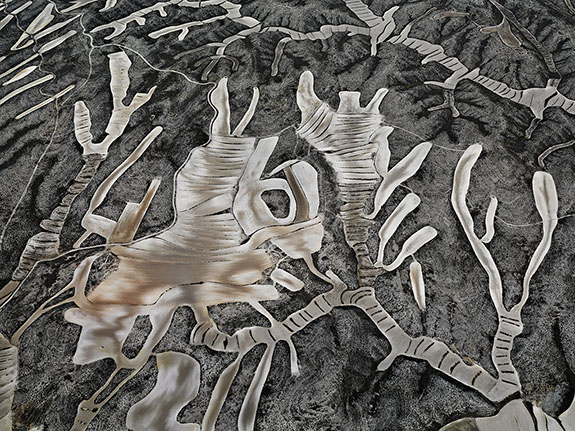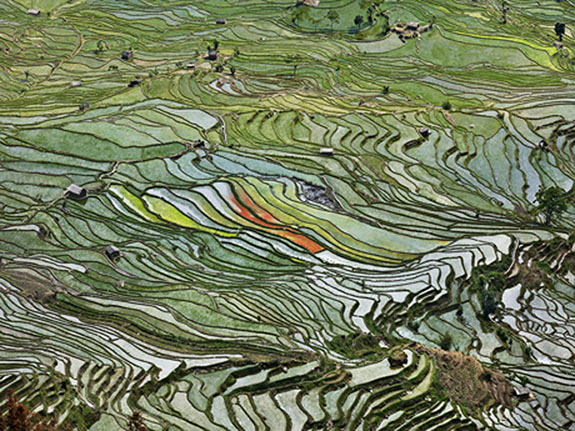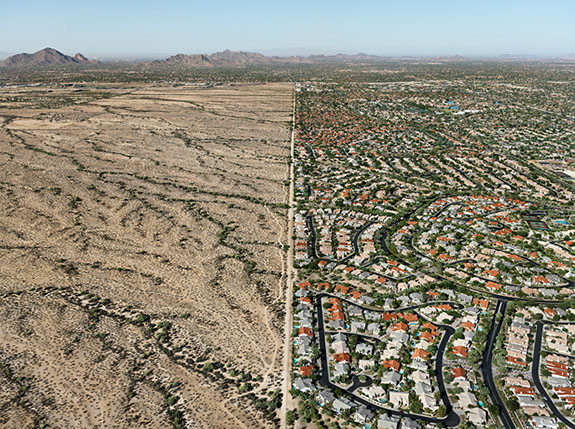 |
.jpg) |
The point was driven home, he says, by an incident in a bar in Adelaide, related to him by a photojournalist. “He ordered a beer and a glass of water, finished his beer, paid the bill and was about to leave when the bartender stopped him and instructed him to finish his glass of water. Suddenly water took on a new meaning for me.”
 |
 |
Despite the lean toward abstraction in this series, Burtynsky doesn’t relinquish the role of documentarian. Reservation/Suburb, from Scottsdale, Arizona, shows two sides of a highway. On one side we see the fruits of irrigation: houses with tile roofs and pools. On the other: raw desert. The picture is divided precisely in half, and topped by a blue horizon. By itself, it tells everything you need to know about water’s relationship to civilization.